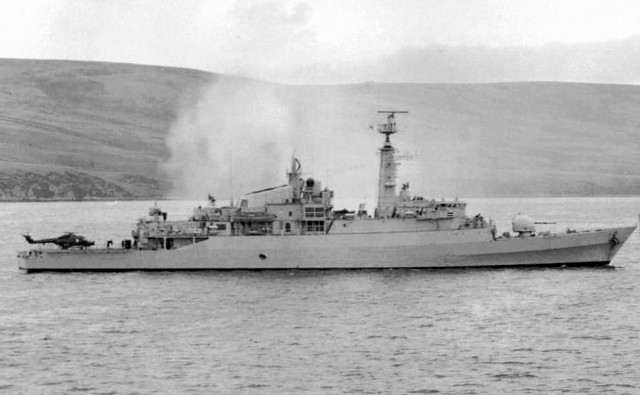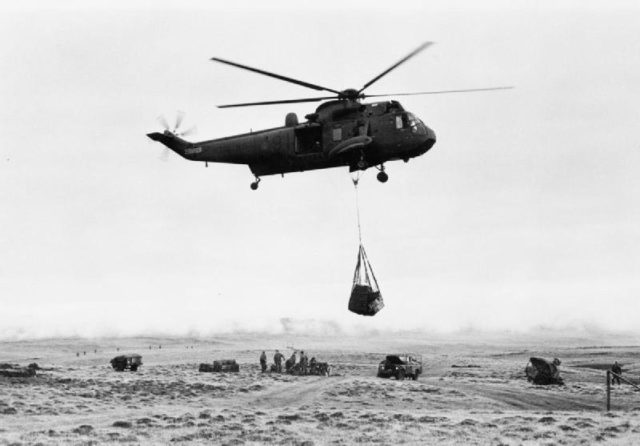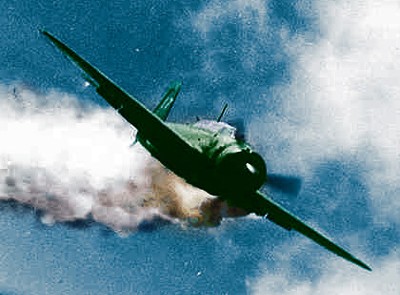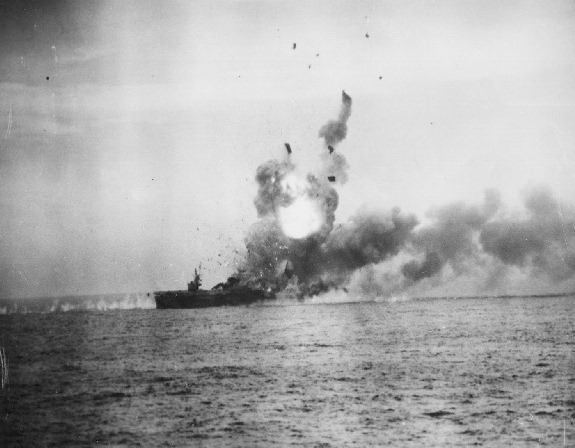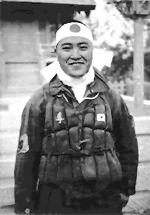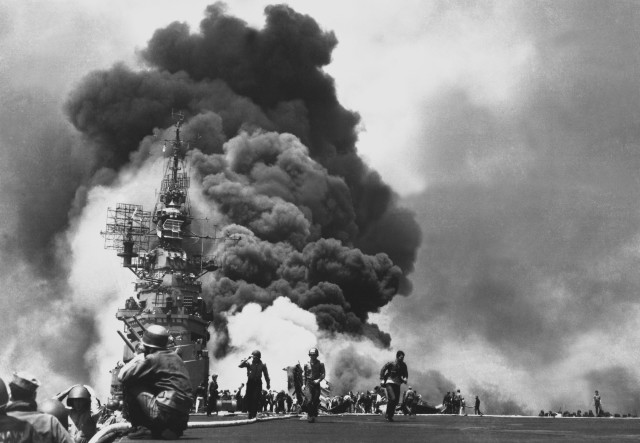This is a touch on from my Friday Post, Andrew McCarthy did a heck of a writeup with the players involved, I just added the pics compliments of "google". I am surprised that this story hadn't really hit the media circuit, but I surmise that it is involving their heroine and they are part of the #theresistance they will not publish anything negative about her since they hope that she can run in 2020. Here is the
Let’s put the Uranium One scandal in perspective: The cool
half-million bucks the Putin regime funneled to Bill Clinton was five
times the amount it spent on those Facebook ads — the ones the
media-Democrat complex ludicrously suggests swung the 2016 presidential
election to Donald Trump.
The Facebook-ad buy, which started in June 2015 — before Donald Trump
entered the race — was more left-wing agitprop (ads pushing hysteria on
racism, immigration, guns, etc.) than electioneering. The Clintons’ own
long-time political strategist Mark Penn estimates that just $6,500 went
to actual electioneering. (You read that right: 65 hundred dollars.) By
contrast, the staggering $500,000 payday from a Kremlin-tied Russian
bank for a single speech was part of a multi-million-dollar
influence-peddling scheme to enrich the former president and his wife,
then–secretary of state Hillary Clinton. At the time, Russia was
plotting — successfully — to secure U.S. government approval for its
acquisition of Uranium One, and with it, tens of billions of dollars in
U.S. uranium reserves.
Here’s the kicker: The Uranium One scandal is not only, or even
principally, a Clinton scandal. It is an Obama-administration scandal.
The Clintons were just doing what the Clintons do: cashing in on their
“public service.” The Obama administration, with Secretary Clinton at
the forefront but hardly alone, was knowingly compromising American
national-security interests. The administration green-lighted the
transfer of control over one-fifth of American uranium-mining capacity
to Russia, a hostile regime — and specifically to Russia’s
state-controlled nuclear-energy conglomerate, Rosatom. Worse, at the
time the administration approved the transfer, it knew that Rosatom’s
American subsidiary was engaged in a lucrative racketeering enterprise
that had already committed felony extortion, fraud, and money-laundering
offenses.
The Obama administration also knew that congressional Republicans
were trying to stop the transfer. Consequently, the Justice Department
concealed what it knew. DOJ allowed the racketeering enterprise to
continue compromising the American uranium industry rather than
commencing a prosecution that would have scotched the transfer.
Prosecutors waited four years before quietly pleading the case out for a
song, in violation of Justice Department charging guidelines.
Meanwhile, the administration stonewalled Congress, reportedly
threatening an informant who wanted to go public.
Obama’s ‘Reset’
To understand what happened here, we need to go back to the beginning.
The first-tier military arsenal of Putin’s Russia belies its status as a
third-rate economic power. For well over a decade, the regime has thus
sought to develop and exploit its capacity as a nuclear-energy producer.
Naïvely viewing Russia as a “strategic partner” rather than a
malevolent competitor, the Bush administration made a
nuclear-cooperation agreement with the Kremlin in May 2008. That
blunder, however, was tabled before Congress could consider it. That is
because Russia, being Russia, invaded Georgia.
In 2009, notwithstanding this aggression (which continues to this day
with Russia’s occupation of Abkhazia and South Ossetia),

President Obama
and Secretary of State Clinton signaled the new administration’s
determination to “reset” relations with Moscow. In this reset, renewed
cooperation and commerce in nuclear energy would be central.
There had been such cooperation and commerce since the Soviet Union
imploded. In 1992, the administration of President George H. W. Bush
agreed with the nascent Russian federation that U.S. nuclear providers
would be permitted to purchase uranium from Russia’s disassembled
nuclear warheads (after it had been down-blended from its highly
enriched weapons-grade level). The Russian commercial agent responsible
for the sale and transportation of this uranium to the U.S. is the
Kremlin-controlled company “Tenex” (formally, JSC Techsnabexport). Tenex
is a subsidiary of Rosatom.
Tenex (and by extension, Rosatom) have an American arm called “Tenam
USA.” Tenam is based in Bethesda, Md. Around the time President Obama
came to power, the Russian official in charge of Tenam was Vadim
Mikerin.
The Obama administration reportedly issued a visa for Mikerin in 2010,
but a racketeering investigation led by the FBI determined that he was
already operating here in 2009.
The Racketeering Scheme
As Tenam’s general director, Mikerin was responsible for arranging and
managing Rosatom/Tenex’s contracts with American uranium purchasers.
This gave him tremendous leverage over the U.S. companies. With the
assistance of several confederates, Mikerin used this leverage to extort
and defraud the U.S. contractors into paying inflated prices for
uranium. They then laundered the proceeds through shell companies and
secret bank accounts in Latvia, Cyprus, Switzerland, and the Seychelle
Islands — though sometimes transactions were handled in cash, with the
skim divided into envelopes stuffed with thousands of dollars in cash.
The inflated payments served two purposes: They enriched
Kremlin-connected energy officials in the U.S. and in Russia to the tune
of millions of dollars; and they compromised the American companies
that paid the bribes, rendering players in U.S. nuclear energy — a
sector critical to national security — vulnerable to blackmail by
Moscow.
But Mikerin had a problem. To further the Kremlin’s push for
nuclear-energy expansion, he had been seeking to retain a lobbyist —
from whom he planned to extort kickbacks, just as he did with the U.S.
energy companies. With the help of an associate connected to Russian
organized-crime groups, Mikerin found his lobbyist. The man’s name has
not been disclosed, but we know he is now represented by Victoria
Toensing, a well-respected Washington lawyer, formerly a federal
prosecutor and counsel to the Senate Intelligence Committee.
When Mikerin solicited him in 2009, the lobbyist was uncomfortable,
worried that the proposal would land him on the wrong side of the law.
So he contacted the FBI and revealed what he knew. From then on, the
Bureau and Justice Department permitted him to participate in the
Russian racketeering scheme as a “confidential source” — and he is thus
known as “CS-1” in affidavits the government, years later, presented to
federal court in order to obtain search and arrest warrants.
At the time this unidentified man became an informant, the FBI was led
by director Robert Mueller, who is now the special counsel investigating
whether Trump colluded with Russia. The investigation was centered in
Maryland (Tenam’s home base). There, the U.S. attorney was Obama
appointee Rod Rosenstein — now President Trump’s deputy attorney
general, and the man who appointed Mueller as special counsel to
investigate Trump.
Because of CS-1, the FBI was able to understand and monitor the
racketeering enterprise almost from the start. By mid-May 2010, it could
already prove the scheme and three separate extortionate payments
Mikerin had squeezed out of the informant. Equally important: According
to reporting by John Solomon and Alison Spann in the Hill, the informant
learned through conversations with Mikerin and others that Russian
nuclear officials were trying to ingratiate themselves with the
Clintons.
Uranium One, Russia, and the Clintons
There is no doubt that this extraordinarily gainful ingratiation took
place. I outlined some of it a year ago in suggesting that the Justice
Department should be investigating the Clinton Foundation, and its
exploitation of Hillary Clinton’s influence as secretary of state, as a
potential racketeering case.
In 2005, former President Clinton helped his Canadian billionaire friend
and benefactor, Frank Giustra, obtain coveted uranium-mining rights
from Kazakhstan’s dictator. The Kazakh deal enabled Giustra’s company
(Ur-Asia Energy) to merge into Uranium One (a South African company), a
$3.5 billion windfall. Giustra and his partners thereafter contributed
tens of millions of dollars to the Clinton Foundation. Besides the
valuable Kazakh reserves, Uranium One also controlled about a fifth of
the uranium stock in the United States.
Alas, Putin, the neighborhood bully, also wanted the Kazakh uranium. He
leaned on Kazakhstan’s dictator, who promptly arrested the official
responsible for selling the uranium-mining rights to Giustra’s company.
This put Uranium One’s stake in jeopardy of being seized by the Kazakh
government.
As Uranium One’s stock plunged, its panicked executives turned to the
State Department, where their friend Hillary Clinton was now in charge.
State sprung into action, convening emergency meetings with the Kazakh
regime. A few days later, it was announced that the crisis was resolved
(translation: the shakedown was complete). Russia’s energy giant,
Rosatom, would purchase 17 percent of Uranium One, and the Kazakh threat
would disappear — and with it, the threat to the value of the Clinton
donors’ holdings.
For Putin, though, that was just a start. He didn’t want a minority
stake in Uranium One, he wanted control of the uranium. For that,
Rosatom would need a controlling interest in Uranium One. That would be a
tall order — not because of the Kazakh mining rights but because
acquisition of Uranium One’s American reserves required U.S. government
approval.

Uranium is foundational to nuclear power and thus to American national
security. As the New York Times explained in a report on the disturbing
interplay between the Clinton Foundation and the transfer of American
uranium assets to Russia, the United States gets a fifth of its
electrical power from nuclear energy, but only produces a fifth of the
uranium it needs. Consequently, a foreign entity would not be able to
acquire rights to American uranium without the approval of the Committee
on Foreign Investment in the United States.
CFIUS is composed of the leaders of 14 U.S. government agencies involved
in national security and commerce. In 2010, these included not only
Secretary of State Hillary Clinton, who had cultivated a reputation as a
hawk opposed to such foreign purchases, but Attorney General Eric
Holder, whose Justice Department (and its lead agency, the FBI) were
conducting the investigation of Rosatom’s ongoing U.S. racketeering,
extortion, and money-laundering scheme.
In March 2010, to push the Obama “reset” agenda, Secretary Clinton
traveled to Russia, where she met with Putin and Dimitri Medvedev, who
was then keeping the president’s chair warm for Putin.
Soon after, it
emerged that Renaissance Capital, a regime-tied Russian bank, had
offered Bill Clinton $500,000 to make a single speech — far more than
the former president’s usual haul in what would become one of his
biggest paydays ever. Renaissance was an aggressive promoter of Rosatom.
The Clinton speech took place in Moscow in June. The exorbitant speech
fee, it is worth noting, is a pittance compared with the $145 million
Newsweek reports was donated to the Clinton Foundation by sources linked
to the Uranium One deal.
The month before the speech, the Hill reports, Bill Clinton told his
wife’s State Department that he wanted to meet while in Russia with
Arkady Dvorkovich, who, in addition to being a top Medvedev aide, was
also a key Rosatom board member. It is not known whether the State
Department gave clearance for the meeting; the question appears to have
become moot since the former U.S. president met directly with Putin and
Medvedev. You’ll be comforted, I’m sure, to learn that aides to the
Clintons, those pillars of integrity, assure us that the topics of
Rosatom and Uranium One never came up.
Keeping Congress in the Dark
Meanwhile, congressional opposition to Russia’s potential acquisition of
American uranium resources began to stir. As Peter Schweizer noted in
his essential book, Clinton Cash: The Untold Story of How and Why
Foreign Governments and Businesses Helped Make Bill and Hillary Rich,
four senior House members steeped in national-security issues — Peter
King (R., N.Y.), Ileana Ros-Lehtinen (R., Fla.), Spencer Bachus (R.,
Ala.), and Howard McKeon (R. Calif.) — voiced grave concerns, pointing
out that Rosatom had helped Iran, America’s sworn enemy, build its
Bushehr nuclear reactor. The members concluded that “the take-over of
essential US nuclear resources by a government-owned Russian agency . . .
would not advance the national security interests of the United
States.”
Republican senator John Barrasso objected to Kremlin control of
uranium assets in his state of Wyoming, warning of Russia’s “disturbing
record of supporting nuclear programs in countries that are openly
hostile to the United States, specifically Iran and Venezuela.” The
House began moving a bill “expressing disfavor of the Congress”
regarding Obama’s revival of the nuclear-cooperation agreement Bush had
abandoned.
Clearly, in this atmosphere, disclosure of the racketeering enterprise
that Rosatom’s American subsidiary was, at that very moment, carrying
out would have been the death knell of the asset transfer to Russia. It
would also likely have ended the “reset” initiative in which Obama and
Clinton were deeply invested — an agenda that contemplated
Kremlin-friendly deals on nuclear-arms control and accommodation of the
nuclear program of Russia’s ally, Iran. That was not going to be allowed
to happen. It appears that no disclosure of Russia’s racketeering and
strong-arming was made to CFIUS or to Congress — not by Secretary
Clinton, not by Attorney General Holder, and certainly not by President
Obama. In October 2010, CFIUS gave its blessing to Rosatom’s acquisition
of Uranium One.
A Sweetheart Plea Helps the Case Disappear
Even though the FBI had an informant collecting damning information, and
had a prosecutable case against Mikerin by early 2010, the extortion
racket against American energy companies was permitted to continue into
the summer of 2014. It was only then that, finally, Mikerin and his
confederates were arrested.
Why then? This is not rocket science. In March 2014, Russia annexed
Crimea. Putin also began massing forces on the Ukrainian border,
coordinating and conducting attacks, ultimately taking control of
territory. Clearly, the pie-in-the-sky Obama reset was dead.
Furthermore, the prosecution of Mikerin’s racketeering scheme had been
so delayed that the Justice Department risked losing the ability to
charge the 2009 felonies because of the five-year statute of limitations
on most federal crimes.
Still, a lid needed to be kept on the case.

It would have made for an
epic Obama administration scandal, and a body blow to Hillary Clinton’s
presidential hopes, if in the midst of Russia’s 2014 aggression, public
attention had been drawn to the failure, four years earlier, to
prosecute a national-security case in order to protect Russia’s takeover
of U.S. nuclear assets.
The Obama administration needed to make this case go away — without a
public trial if at all possible.
Think about this: The investigation of Russian racketeering in the
American energy sector was the kind of spectacular success over which
the FBI and Justice Department typically do a bells-n-whistles victory
lap — the big self-congratulatory press conference followed by the
media-intensive prosecutions . . . and, of course, more press
conferences.
Here . . . crickets.
As the Hill reports, the Justice Department and FBI had little to say
when Mikerin and his co-conspirators were arrested. They quietly
negotiated guilty pleas that were announced with no fanfare just before
Labor Day. It was arranged that Mikerin would be sentenced just before
Christmas. All under the radar.
How desperate was the Obama Justice Department to plead the case out?

Here, Rosenstein and Holder will have some explaining to do.
Mikerin was arrested on a complaint describing a racketeering scheme
that stretched back to 2004 and included extortion, fraud, and money
laundering. Yet he was permitted to plead guilty to a single count of
money-laundering conspiracy.
Except it was not really money-laundering conspiracy.
Under federal law, that crime (at section 1956 of the penal code)
carries a penalty of up to 20 years’ imprisonment — not only for
conspiracy but for each act of money laundering.

But Mikerin was not
made to plead guilty to this charge. He was permitted to plead guilty to
an offense charged under the catch-all federal conspiracy provision
(section 371) that criminalizes agreements to commit any crime against
the United States. Section 371 prescribes a sentence of zero to five
years’ imprisonment.
The Justice Department instructs prosecutors that when Congress has
given a federal offense its own conspiracy provision with a heightened
punishment (as it has for money laundering, racketeering, narcotics
trafficking, and other serious crimes), they may not charge a section
371 conspiracy. Section 371 is for less serious conspiracy cases. Using
it for money laundering — which caps the sentence way below Congress’s
intent for that behavior — subverts federal law and signals to the court
that the prosecutor does not regard the offense as major.
Yet, that is exactly what Rosenstein’s office did, in a plea agreement
his prosecutors co-signed with attorneys from the Justice Department’s
Fraud Section. (See in the Hill’s report, the third document embedded at
the bottom, titled “Mikerin Plea Deal.”) No RICO, no extortion, no
fraud — and the plea agreement is careful not to mention any of the
extortions in 2009 and 2010, before CFIUS approved Rosatom’s acquisition
of U.S. uranium stock. Mikerin just had to plead guilty to a nominal
“money laundering” conspiracy charge. This insulated him from a real
money-laundering sentence. Thus, he got a term of just four years’
incarceration for a major national-security crime — which, of course, is
why he took the plea deal and waived his right to appeal, sparing the
Obama administration a full public airing of the facts.
Interestingly, as the plea agreement shows, the Obama DOJ’s Fraud
Section was then run by Andrew Weissmann, who is now one of the top
prosecutors in Robert Mueller’s ongoing special-counsel investigation of
suspected Trump collusion with Russia.
There was still one other problem to tamp down. That was the informant —
the lobbyist who alerted the FBI to the Russian racketeering enterprise
back in 2009. He wanted to talk.
Specifically, as his attorney, Ms. Toensing, explains, the informant
wanted to tell Congress what he knows — about what the FBI and the
Justice Department could already have proved in 2010 when CFIUS signed
off on Russia’s acquisition of American nuclear material, and about what
he’d learned of Russian efforts to curry favor with Bill and Hillary
Clinton. But he was not allowed to talk.
It turns out, the lawyer explains, that the FBI had induced him to sign a
non-disclosure agreement. The Justice Department warned him that it was
enforceable — even against disclosures to Congress. (Because, you know,
the FBI is opposed to all leaks and disclosures of confidential
investigative information . . . except those initiated by the FBI, of
course.) In addition, when the informant was primed to file a federal
civil lawsuit to recover his own losses from the scheme, he claims that
the Justice Department threatened him with prosecution, warning that a
lawsuit would violate the non-disclosure agreement. The Hill reports
that it has obtained emails from a civil lawyer retained by the witness,
which describe pressure exerted by the Justice Department to silence
the informant.
What a coincidence: That was in 2016, the stretch run of Hillary
Clinton’s presidential campaign.
This stinks.


